
Patiala is a city in southeastern Punjab, northwestern India. It is the fourth largest city in the state and is the administrative capital of Patiala district. Patiala is located around the Qila Mubarak constructed by the Sidhu Jat chieftain Ala Singh, who founded the royal dynasty of Patiala State in 1763, and after whom the city is named.

Amritsar, historically also known as Rāmdāspur and colloquially as Ambarsar, is the second-most populous city in the Indian state of Punjab. The city is the administrative headquarters of the Amritsar district and is located in the Majha region of Punjab.
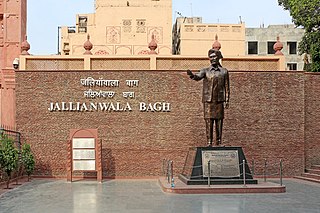
Jallianwala Bagh is a historic garden and ‘memorial of national importance’ in Amritsar, India, preserved in the memory of those wounded and killed in the Jallianwala Bagh Massacre that occurred on the site on the festival of Vaisakhi, 13 April 1919. It houses a museum, gallery and a number of memorial structures.

Master Tara Singh was a Sikh political and religious leader in the first half of the 20th century. He was instrumental in organising the Shiromani Gurdwara Prabhandak Committee and guiding the Sikhs during the partition of India, which he strongly opposed. He later led their demand for a Sikh-majority state in Punjab, India. His daughter, the Indian journalist and politician Rajinder Kaur, was killed by Punjab Police in Bathinda.

Majha is a region located in the central parts of the historical Punjab region split between India and Pakistan. It extends north from the right banks of the river Beas, and reaches as far north as the river Jhelum. People of the Majha region are given the demonym "Mājhī". Most inhabitants of the region speak the Majhi dialect, which is the basis of the standard register of the Punjabi language. The most populous city in the area is Lahore on the Pakistani side and Amritsar on the Indian side of the border.

The Jallianwala Bagh massacre, also known as the Amritsar massacre, took place on 13 April 1919, when Acting Brigadier-General Reginald Dyer ordered troops of the British Indian Army to fire their rifles into a crowd of unarmed Indian civilians in Jallianwala Bagh, Amritsar, Punjab, killing at least 379 people and injuring over 1,200 other people.
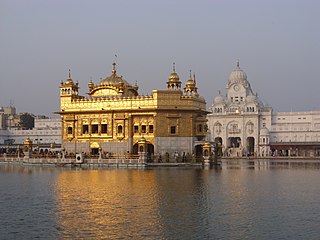
Sikhism is the fourth largest religion in India contributing 1.7% of the population and has existed for 550 years, beginning with the birth of its founder Guru Nanak Dev. The Sikhs are predominantly located in Punjab, but also in many other parts of India. It is also the fifth largest organised religion in the world, with more than 30 million followers as of the year 2020.
S. Tarlochan Singh is an Indian politician. He is a Member of the Parliament of India, representing Haryana. He served as Chairman National Commission for Minorities from 2003 to 2006, was member, National Human Rights Commission of India, Govt. of India, 2003 to 2006. He served as Vice Chairman, National Commission for Minorities from 2000 to 2003.

Ramgarhia Bunga or Burj is the three-storeyed red stone watchtowers complex located near southeastern edge of the Golden Temple, Amritsar. The two minaret-style Ramgarhia Bunga high towers are visible from the parikrama (circumambulation) walkway around the Harmandir Sahib Sarovar. It is a pre-Ranjit Singh structure built by Sikh warrior and Ramgarhia misl chief Jassa Singh Ramgarhia in late 18th-century, after the 1762 destruction and desecration of the Sikh holy temple and site by the Afghan Muslim forces led by Ahmed Shah Abdali. The Bunga watchtowers-related infrastructure was constructed to station sentinels to watch for any surprise attack, house soldiers to help fortify the area, and to protect the holy complex from desecration.

Punjab is a state in northern India. Forming part of the larger Punjab region of the Indian subcontinent, the state is bordered by the Indian union territories of Jammu and Kashmir to the north, Chandigarh to the east, the Indian states of Himachal Pradesh to the north and northeast, Haryana to the south and southeast, and Rajasthan to the southwest. It is bordered by Punjab, a province of Pakistan to the west. The state covers an area of 50,362 square kilometres, 1.53% of India's total geographical area. It is the 20th-largest Indian state by area. With 27,704,236 inhabitants at the 2011 census, Punjab is the 16th-largest state by population, comprising 22 districts. Punjabi, written in the Gurmukhi script, is the most widely spoken and official language of the state. The main ethnic group are the Punjabis, with Sikhs (57.7%) and Hindus (38.5%) as the dominant religious groups. The state capital is Chandigarh, a Union Territory and also the capital of the neighbouring state of Haryana. The five tributary rivers of the Indus River from which the region took its name are the Sutlej, Ravi, Beas, Chenab and Jhelum rivers; the Sutlej, Ravi and Beas rivers flow through the Indian Punjab.

Pul Kanjri is a historical site situated 35 km away from Amritsar on Amritsar-Lahore road, near the villages of Dhanoa Khurd and Dhanoa Kalan on the Wagah border. It is one of the heritage sites built by Maharaja Ranjit Singh, where he used to rest while travelling with his troops. During his reign, Pul Kanjari was an important trading centre. The legend has it that the village was named after a pul (bridge) that was built by the king for a dancer Moran who was of kanjri caste. It is said that one day while crossing the canal one of her shoes fell into the water which vexed her a great deal and a bridge was constructed on her insistence. This fortress also contains a bathing pool, a temple, a Gurudwara and a mosque which were the secular concern of the Maharaja. The village has a monument built in memory of the Jawans who lost their lives in the 1971 war with Pakistan.
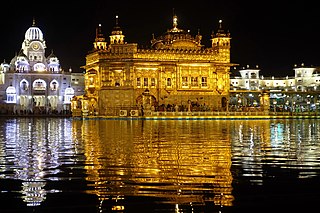
The Golden Temple, also known as Harmandir Sahib, meaning "abode of God" or Darbār Sahib, meaning "exalted court", is a Gurdwara located in the city of Amritsar, Punjab, India. It is the preeminent spiritual site of Sikhism.
It is estimated that the city of Lahore, Pakistan, has a Muslim majority with 95.4% and Christian minority constitute 3% of the population and rest Sikhs and Hindus constitute the remaining 1.6%. There is also a small but longstanding Zoroastrian community
The Akali movement, also called the Gurdwara Reform Movement, was a campaign to bring reform in the gurdwaras in India during the early 1920s. The movement led to the introduction of the Sikh Gurdwara Bill in 1925, which placed all the historical Sikh shrines in India under the control of Shiromani Gurdwara Parbandhak Committee (SGPC).

Punjab is the largest province in population and the second largest province in physical size in Pakistan. In 2017, 1.75 million tourists visited Pakistan according to the World Travel and Tourism Council.
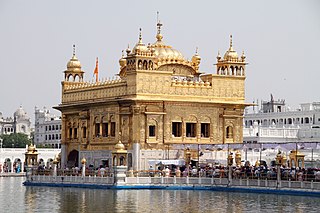
The state of Punjab is renowned for its cuisine, culture and history. Punjab has a vast public transportation and communication network. Some of the main cities in Punjab are Amritsar, Jalandhar, Patiala, Pathankot and Ludhiana. Patiala is known for its historical forts. Punjab also has a rich Sikh religious history.
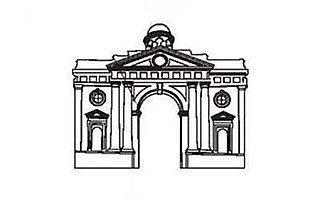
The Partition Museum is a public museum located in the town hall in Amritsar, India. The museum aims to become the central repository of stories, materials, and documents related to the post-partition riots that followed the division of British India into two independent countries: India and Pakistan. The museum was inaugurated on 25 August 2017.

Amritsar is a city situated in the state of northern Punjab, the northwestern region of India. It is 25 kilometres away from the Pakistan border. This important Punjab city is the main centre of commerce, culture, and transportation. It is the centre of Sikhism and the principal place of worship for Sikhs. Amritsar is attractive destination for tourists, especially those part of Golden Triangle. Major destinations are:

Punjab State War Heroes' Memorial and Museum is Indian Army war memorial and museum dedicated to Punjabis located on Amritsar - Attari Road on the outskirts of the holy city of Amritsar, Punjab, India. It is spread on area of three hectares. Its location is on the National Highway-1 about 18 km away from India–Pakistan border making it a prominent landmark and attraction for the tourists of Wagah-Attari border ceremony.

















